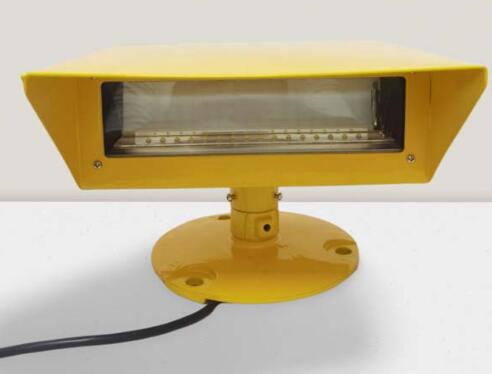Helipad Flood Lights: Illuminating the Path to Safe Helicopter Landings
In the realm of aviation, ensuring the safety of helicopter operations is of paramount importance. Among the various elements that contribute to a secure helipad environment, helipad flood lights stand out as a critical component. These lights play a vital role in providing clear visibility, both day and night, allowing pilots to execute landings and take - offs with confidence.
The Significance of Helipad Flood Lights
Helipad flood lights are specifically designed to illuminate the entire helipad area. Their primary function is to create a well - lit and distinct landing zone, enabling pilots to accurately identify the helipad's boundaries and center point. This is crucial, especially during low - light conditions such as at night, during dawn or dusk, or in adverse weather situations like fog, rain, or snow. In these scenarios, proper lighting can be the difference between a smooth landing and a potentially dangerous situation.
Technical Features and Design
Modern helipad flood lights are equipped with advanced lighting technologies. High - intensity discharge (HID) lamps, such as metal - halide or high - pressure sodium lamps, are commonly used due to their high luminous efficacy, which means they can produce a large amount of light with relatively low energy consumption. Additionally, light - emitting diode (LED) technology is also gaining popularity in helipad flood lights. LEDs offer several advantages, including longer lifespan, faster response times, and better color rendering, which can enhance the visual clarity of the helipad.

The design of helipad flood lights also takes into account the need to minimize glare for the pilot. Specialized optics and diffusers are used to distribute the light evenly across the helipad surface without causing excessive brightness or glare that could impair the pilot's vision. The lights are often mounted at strategic positions around the helipad, ensuring comprehensive coverage of the landing area.
Industry Standards and Regulations
There are strict international and national standards governing the installation and operation of helipad flood lights. For example, the International Civil Aviation Organization (ICAO) has established guidelines regarding the intensity, color, and distribution of lighting on helipads. In the United States, the Federal Aviation Administration (FAA) has its own set of regulations. These standards ensure that all helipads, regardless of their location or size, provide a consistent and safe lighting environment for helicopter operations. Compliance with these regulations is not only a matter of safety but is also legally required for helipad owners and operators.
| helipad flood lights |
| helipad flood light |
Maintenance and Upkeep
Regular maintenance of helipad flood lights is essential to ensure their optimal performance. This includes routine inspections to check for any signs of damage, such as cracked lenses or faulty wiring. The bulbs need to be replaced at the recommended intervals to maintain the proper light intensity. Additionally, the light fixtures should be cleaned regularly to remove dirt, dust, and other debris that could reduce the light output. With proper maintenance, helipad flood lights can provide reliable service for many years.
Future Developments
As technology continues to evolve, we can expect to see further improvements in helipad flood lights. Smart lighting systems, for instance, may be developed, allowing for remote monitoring and control of the lights. This would enable operators to adjust the lighting intensity, check the status of the lights, and receive alerts in case of any malfunctions. Moreover, the development of more energy - efficient and environmentally friendly lighting technologies will likely lead to the adoption of new and improved helipad flood lights in the future.
In conclusion, helipad flood lights are an indispensable part of any helipad infrastructure. They are the unsung heroes that contribute to the safe and efficient operation of helicopters. By adhering to industry standards, maintaining the lights regularly, and embracing technological advancements, we can ensure that these lights continue to shine brightly, guiding helicopters to safe landings for years to come.
